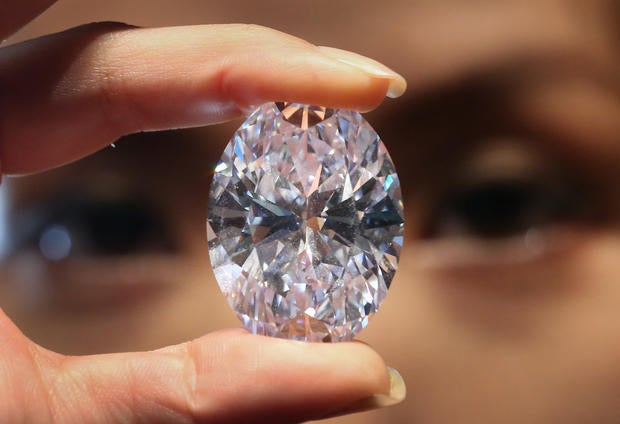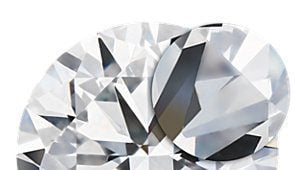

Internally Flawless category (IF) diamonds have no inclusions visible under 10× magnification, only small blemishes on the diamond surface.Flawless category (FL) diamonds have no inclusions or blemishes visible under 10× magnification.The GIA diamond grading scale is divided into six categories and eleven grades. Two diamonds of grade VS 1 and SI 2 respectively. Modern GIA grading system GIA diamond clarity grading scale The last change to the clarity grading system took place in the 1990s when the term "imperfect" was changed to "included". This change was made in response to a growing number of diamonds of very low clarity being cut. The second change made to the grading system was the introduction of the I 3 grade. The Internally Flawless grade gave diamond manufacturers a choice to leave blemishes on the surface of the stone, and achieve a grade higher than VVS 1. Firstly, the Internally Flawless grade was added, as GIA noticed that many diamonds were being aggressively cut to remove any surface blemishes, and thereby reducing the cutting quality ("make") of the diamonds. ĭuring the 1970s, two changes were made to the system. The 'I' of the I 1, and I 2 grades originally stood for "Imperfect". The system at that time contained nine grades: Flawless, VVS 1, VVS 2, VS 1, VS 2, SI 1, SI 2, I 1, and I 2. They took terminology used in the industry at the time and refined the definitions to produce a clarity scale by which diamonds could be consistently graded. In 1953, they released their new system which assessed three aspects of diamonds make, color and clarity. Liddicoat, along with Marquis Person, Joe Phillips, Robert Crowningshield and Bert Krashes began to work on a new diamond grading system which they called the "diamond grading and evaluation appraisal". Blemishes Ĭlarity grading Gemological Institute of America grading system History When diamonds are graded, they are magnified at 10× power. For natural diamonds, the "internal characteristics" in the diamond are growth crystals that give the diamond its character and unique fingerprint. The diamond industry uses the term "internal characteristics" instead of "inclusions". Features resulting from diamond enhancement procedures, such as laser lines, are also considered inclusions or blemishes. There are several types of inclusions and blemishes, which affect a diamond's clarity to varying degrees. In addition, as synthetic diamond technology improves and distinguishing between natural and synthetic diamonds becomes more difficult, inclusions or blemishes can be used as proof of natural origin. Minor inclusions or blemishes are useful, as they can be used as unique identifying marks analogous to fingerprints. Large cracks close to or breaking the surface may reduce a diamond's resistance to fracture.ĭiamonds with higher clarity grades are more valued, with the exceedingly rare "Flawless" graded diamond fetching the highest price.

However, large clouds can affect a diamond's ability to transmit and scatter light. Most inclusions present in gem-quality diamonds do not affect the diamonds' performance or structural integrity and are not visible to the naked eyes. A clarity grade is assigned based on the overall appearance of the stone under ten times magnification, which is the standard magnification for loupes used in the gem world.

The number, size, color, relative location, orientation, and visibility of inclusions can all affect the relative clarity of a diamond. They may be crystals of a foreign material or even another diamond crystal, or may have produced structural imperfections, such as tiny cracks that make a diamond appear whitish or cloudy. Inclusions are solids, liquids, or gases that were trapped in a mineral as it formed. Clarity is one of the four Cs of diamond grading, the others being carat, color, and cut.
#FLAWLESS DIAMONDS SERIES#
Relating to the appearance of internal and surface defects in diamond Part of a series onĭiamond clarity is the quality of diamonds that relates to the existence and visual appearance of internal characteristics of a diamond called inclusions, and surface defects, called blemishes.


 0 kommentar(er)
0 kommentar(er)
